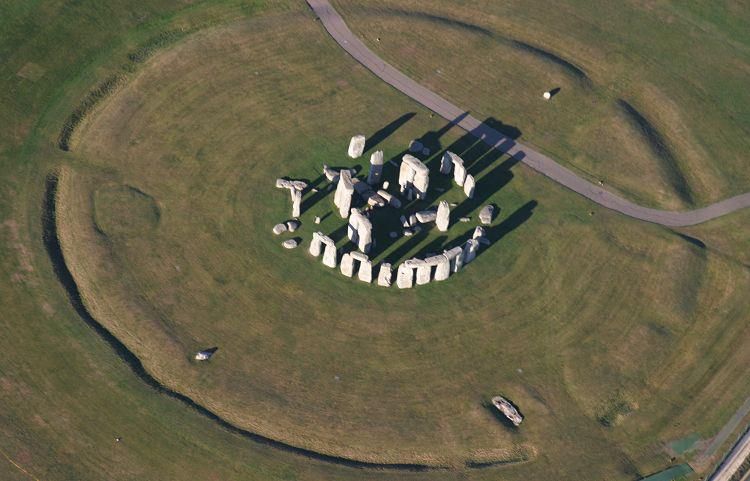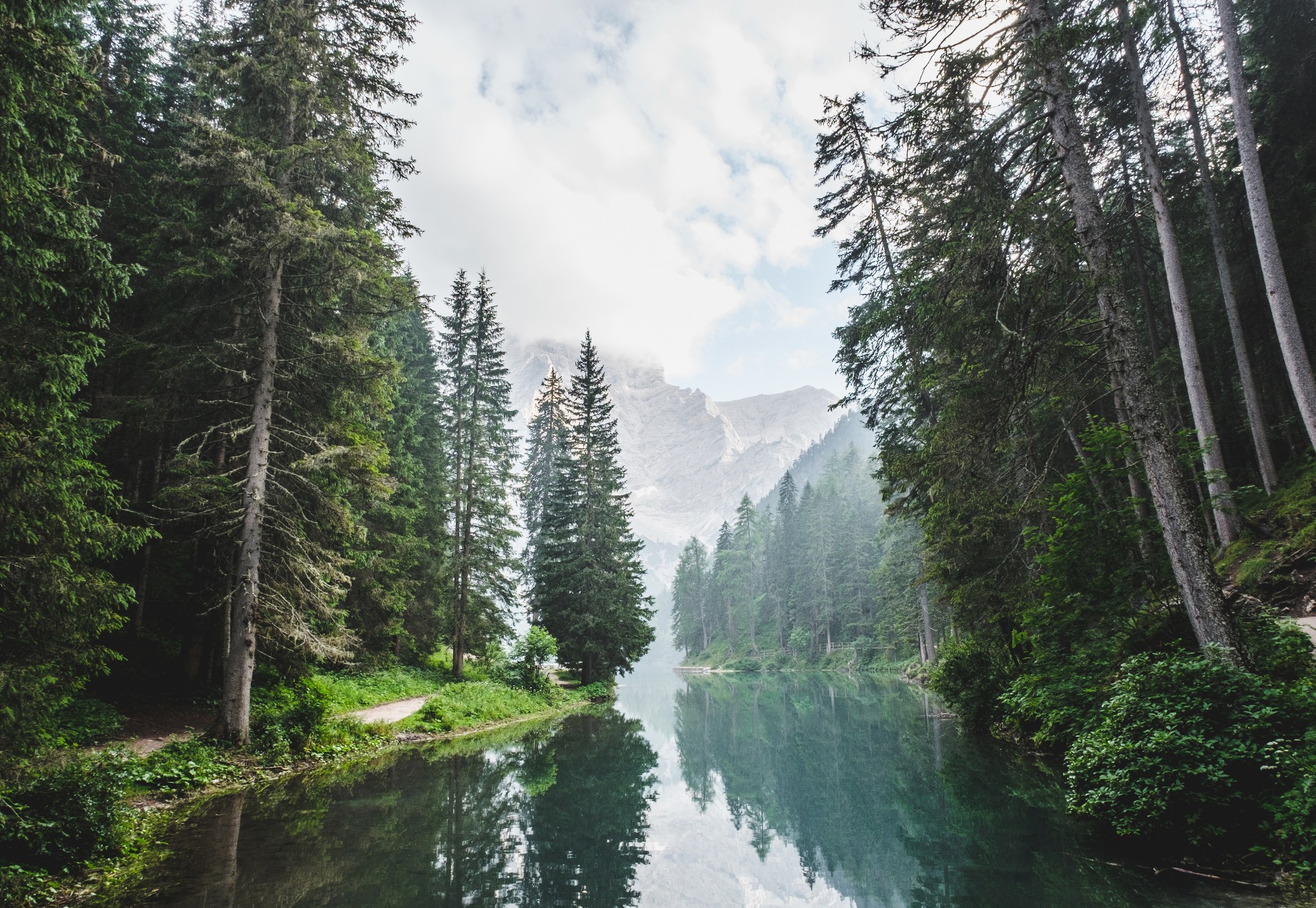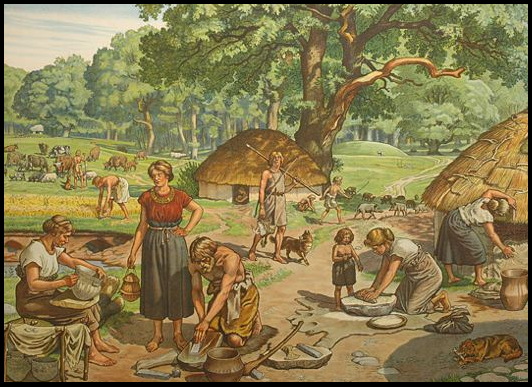Neolithic
(10.000 - 6.000 years ago)
Neo = new Lithic = stone
This period is characterized by a sedentary lifestyle, the appearance of the first settlements, the use of polished stone and pottery and the beginning of livestock raising and agriculture (farming).
They discovered that seeds germinated giving plants with fruits and those fruits gave seeds. The first cultivated species were rice and wheat.
They also learned to domesticate animals, starting to tame small animals that gave them food and clothing. The first domesticated species were goats, sheep, pigs, horses, oxen and dogs.
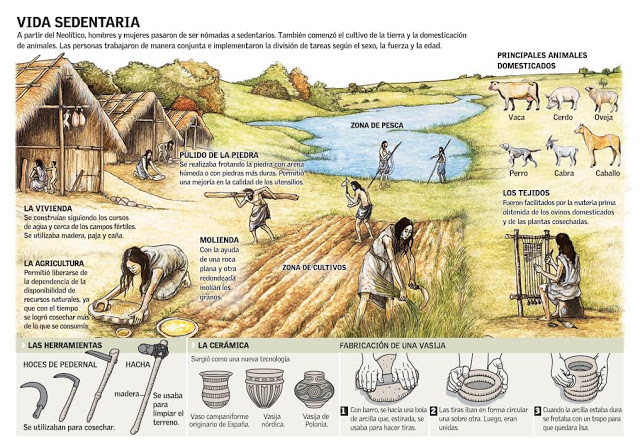
_______________________________________________________
How they lived
They became sedentary, they ceased to be nomads and settled down in villages that were located mainly by the side of a river or a lake. This way they had water to irrigate the fields and give the animals a drink.
They also learnt how to build adobe (a mix of mud and straw), stone and wooden houses, which protected them from bad weather. Some villages were protected by a wall, to defend themselves and the access to the houses was through the roof.

By living in a fixed place, they had more time to dedicate themselves to other activities, so different jobs appeared, such as pottery, wool and linen tailoring ...
Trade started in Neolithic times. They didn't have money so they exchanged goods, this is called bartering (in Spanish trueque).
______________________________________________________________
The tools
The tools they used to cultivate the fields were made out of wood, stone, and bone.
The most important tools they invented were:

The sickle, made of wood with stone teeth to cut.

The ax was made of stone with a wooden handle.

The hoe, to remove the earth.

The hand mill, which had two pieces, one flat and hollow stone and the other in the shape of a ball.
The grain was put on the flat stone and it was ground with the round one.
____________________________________________________________
Pottery
During the Neolithic period pottery was invented.
It was made with clay and water, it was shaped with the hands and cooked. It was used to make pots and bowls to eat and store food and water.
This was very important when founding villages because they could store food and water.

______________________________________________________________________
Megalithic architecture
A megalith is a large pre-historic stone that has been used to construct a structure or monument, either alone or together with other stones. There are over 35,000 in Europe alone.
The origin of most megalithic monuments is placed in the Mediterranean region in the early Neolithic period, from here this culture is said to have been carried by traders to the rest of Europe and Asia.
Megaliths demonstrate understandings of geometrical and astronomical knowledge in society that was not thought to be established for centuries.
The majority of megalithic monuments are associated with multiple or individual burial grounds in the form of communal tombs.
There are many different types of megalithic estructures, we are going to learn about three of them:
- Menhir: a menhir is a large upright standing stone. Menhirs may be found singly as monoliths, or as part of a group of similar stones. They are generally thought
to be religious symbols.
In some cases they may be merely limit stones between different
tribal territories.
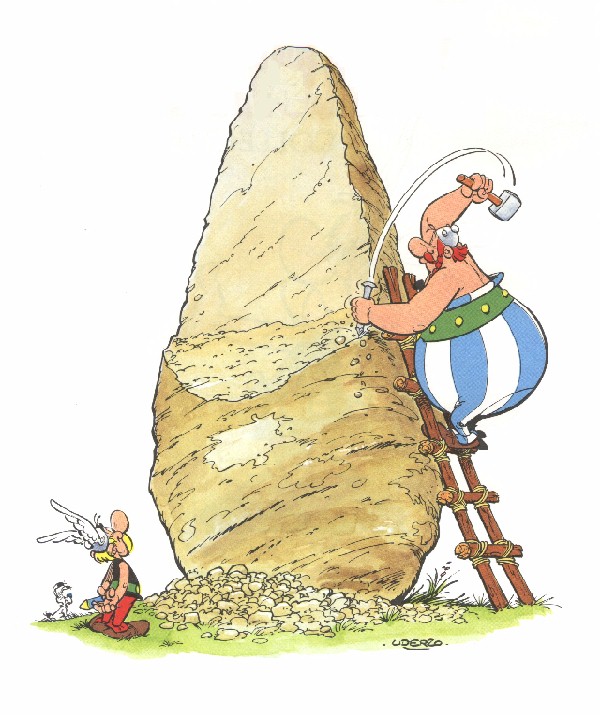
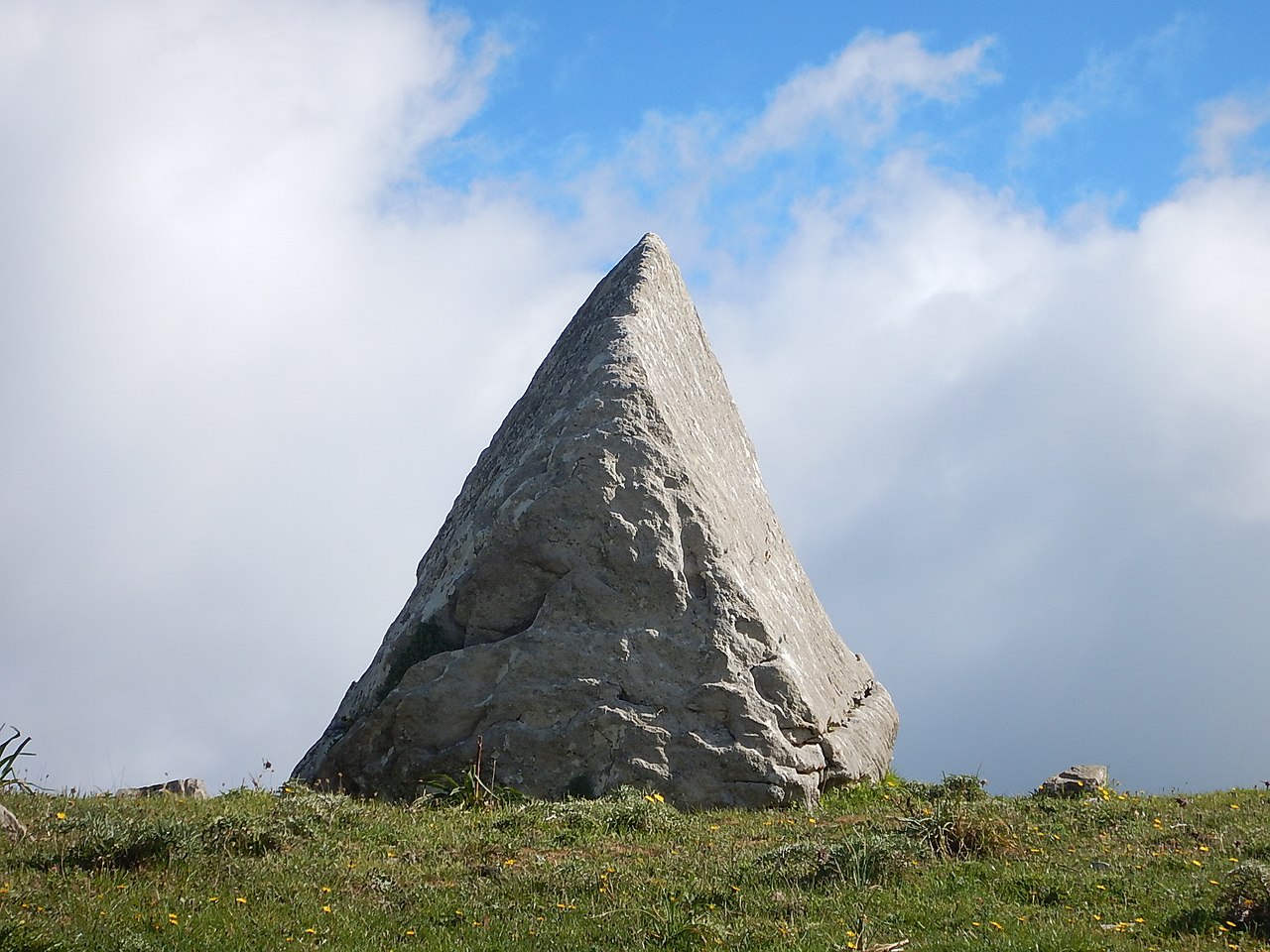
- Dolmen: dolmens are more complex structures. Often roofed passageways they are prehistoric tombs.


One of the biggest dolmens is in Antequera, Málaga.
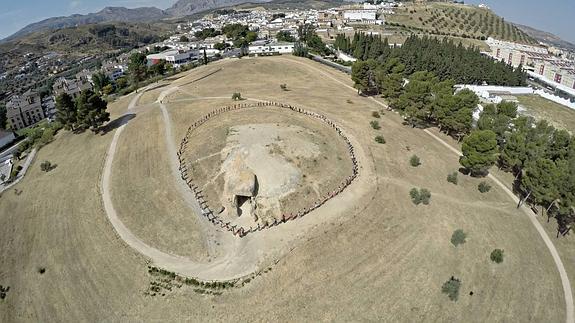
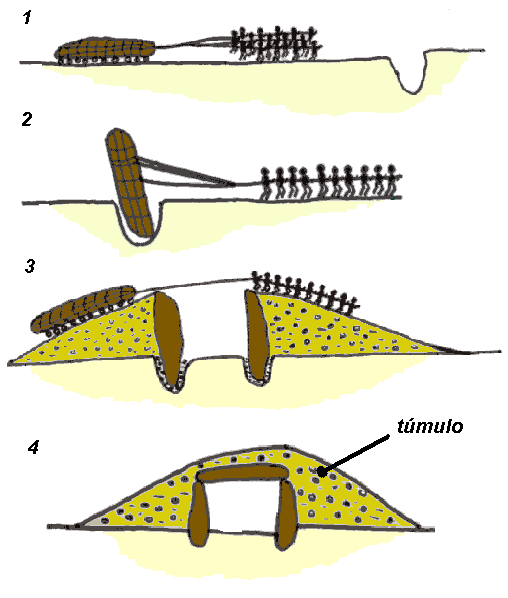
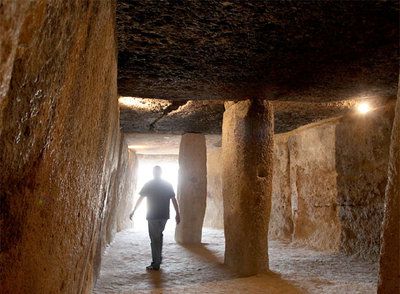

- Cromlech: a cromlech is a megalithic stone circle. They are burial sites for the incinerated remains of dead people. These remains are found mainly in the middle of the stone circle.
